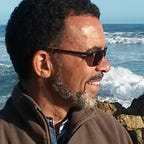Integrating people, conservation and climate action — a last-decade chance
With COP26 (on climate) and COP15 (on biodiversity) sharing the limelight for 2020, and their shared postponement due to Covid-19, the truism that climate and biodiversity are intertwined crises and must be addressed jointly is now in the mainstream. And Covid-19 has helped underline the further fact that the third pillar, people, makes their joint resolution a three-part problem of people, climate and biodiversity together.
Three-part problems are notoriously difficult to resolve, and in this case each on its own has defied success to date. How do we leap from no success in any of them (GHG emissions exceeding worst case scenarios up till 2019, no biodiversity targets met in 2020, global economies and population increasingly inequitable and growing rapidly), to the level of success needed within ten years to meet the ambitious goals countries have made — no more than 1.5C warming, nature-positive by 2030 and an equitable and just society?
Historically, global solutions have been identified through global fiat — whether through policies developed among governments or at the United Nations, or targets determined through science estimating idealized targets in simplified models of the world. But historic approaches to climate action and conservation, while delivering some successes, have not delivered enough for people or planet.
COPs 26 and 15 offer new opportunities for global target setting, and resolving this nexus. And counter-intuitively, the pause imposed by Covid-19, by giving us more time to think, may have helped to improve the targets that are set.
Think and act local
Importantly, Global South countries, scientists and practitioners are becoming more vocal, hitting the ‘pause’ button on the fiat of global targets, and calling for a ‘speed up’ button on more inclusive consultation and local contextualization. For both climate and biodiversity targets and solutions, we are asking how each local context can better inform what should be aimed for locally, how to deal with multiple targets simultaneously, and how the full extent of local efforts (across 100% of space) can be planned and then added up to national and global measures of success.
In many regions (in global south and north), people are highly vulnerable to climate change due to their high dependence on nature’s benefits and/or exposure to hazards. Thus biodiversity and climate solutions need to be accessible to people locally, to not be so distant as to have no perceived (or real) benefit, and certainly must not be harmful. Climate and biodiversity actions must be done ‘where people live’ in local areas, not just in remote, sparsely-populated regions. And often these actions will entail having to restore function and diversity to fragments of natural habitat already impacted by historically.
In these ‘shared spaces’ (where nature and people are intertwined)[1], the concept of integrating intact habitat in broader land and seascapes has been gaining ground. We now know that we need to integrate climate, biodiversity and people actions together — and on this the global south and north are perhaps in agreement, though from profoundly different perspectives, and different priorities, that impede agreement.
A last-decade earthshot
2020 has shown that we did not achieve any of these global goals singly (climate, biodiversity, equity) … and we only have one decade (less) to succeed in achieving them jointly.
There are no two ways about this — if the new set of decadal targets (from COPs 26 and 15, and those already set in the SDGs) are missed, this will mean the end of aspirations of limiting warming to 1.5 and maybe even 2C, and of linked biodiversity ambitions, such as retaining more than a tiny fraction (1%) of coral reefs globally.
The only ‘safe and just’ way to deal with this nexus of climate, biodiversity and people may be to focus down to local levels — the spaces in which people live — and replicate this across the whole planet.
Many of the tools are available, but the amount of resources needed, and the devolution of governance to the right levels are immense challenges.
We have only one shot, and only one decade, to do this — starting with COP26.
